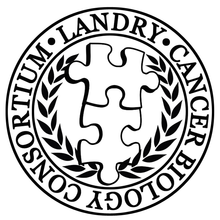Molly DeCristo
McAllister Lab
The cyclin D:CDK4/6 axis is one of the most frequently dysregulated pathways in human cancers, and CDK4/6 inhibitors have shown significant activity against several solid tumors, including breast cancer. We found that the CDK4/6 inhibitor, abemaciclib, caused significant tumor regression in the MMTV-rtTA/tetO-HER2 mouse model of luminal breast cancer. CDK4/6 inhibitors are known to block breast cancer cell proliferation, but do not directly induce tumor cell apoptosis. Therefore, the mechanisms by which CDK4/6 inhibition causes tumor regression are not clear.
Notably, abemaciclib therapy increased total CD3+ T cells in these tumors, while decreasing the immunosuppressive CD4+ regulatory T cell population. Further investigation revealed that CDK4/6 inhibition directly suppresses regulatory T cells by inhibiting their proliferation. This decrease in Tregs is generalizable across tumor types and mouse strains as evidenced by confirmation in the CT-26 colorectal carcinoma and PyMT S2WTP3 mammary carcinoma models. Importantly, antibody-mediated depletion of CD8+ T cells established that response of MMTV-rtTA/tetO-HER2 tumors to abemaciclib is in part dependent on CD8+ T cells.
Finally, given the observed immunomodulatory effects of abemaciclib, we sought to determine if abemaciclib treatment would sensitize MMTV-rtTA/tetO-HER2 tumors to immune checkpoint blockade. Pretreatment with abemaciclib followed by combination abemaciclib and anti-PDL1 significantly enhanced the depth and duration of tumor regression compared to abemaciclib or anti-PDL1 alone. Our studies reveal a novel mechanism by which CDK4/6 inhibitors directly enhance an anti-tumor immune response, and these results provide strong rationale for further investigations into combining CDK4/6 inhibitors with immune checkpoint blockade in breast cancer.
Josh Pan
Kadoch Lab
Efforts to define protein complexes and their functional networks are critical for systems-level understanding of the pathways involved in human cancer. Current methods to catalog human protein complexes via physical interaction are often unable to resolve functional differences between complex members or infer relationships governed by sub-stoichiometric interactions. While functional wiring maps in yeast have been generated by measuring epistatic interactions between pairs of genes, efforts to scale this concept in individual human cell lines have been met with challenges and have only been able to characterize limited numbers of genes at a time.
We have developed a scalable approach that can measure functional similarity without the constraints of pairwise genetic interaction experiments. Using data from genomewide RNAi and CRISPR dropout screens performed in hundreds of cancer cell lines, we leveraged the heterogeneity of gene dependencies across cancer types to measure functional similarity between thousands of genes at once, which in turn allowed us to recreate known inter- and intra-complex functional relationships and to uncover tumor suppressive and oncogenic functional modules in cancer-relevant pathways such as proteolysis, metabolism, and transcription.
Applying these approaches to the mammalian SWI/SNF (BAF) chromatin remodeling complex, which is mutated in over 20% of human cancers, revealed three functional modules that arose separately during metazoan evolution, one of which is entirely novel and uncharacterized. We then performed biochemical experiments that fully support three specialized complex configurations, each with distinct size, subunit composition, and function. These data reorganize the BAF complex into previously unrecognized modules that better explain mutational burden in human cancer. Notably, we observe that that all known BAF-driven, highly penetrant rare cancers and neurodevelopmental disorders involve disruption within a single functional module we defined, underscoring the value of evaluating disease genomics through the lens of functional modularity.
Whitney Silkworth
Fisher Lab
Though initially promising, advances in targeted and immune therapies for melanoma are met with resistance and an inadequate response rate. Analysis of patient biopsies and cell lines revealed that both acquired and intrinsic resistance to these therapies is associated with an undifferentiated cell state characterized by low levels of MITF, the master regulator of melanocyte development. Using the Project Achilles data set, we identified a genetic dependency in low-MITF melanomas on LSD1, a lysinespecific histone demethylase that has commercially available inhibitors. We validated the LSD1 dependency in multiple melanoma cell lines using both genetic and pharmacologic inhibition. To understand the mechanistic basis of this dependency, computational analysis of publicly available datasets suggests 3 candidate targets of LSD1 in low-MITF melanomas. We have shown that LSD1-mediated cell death in low-MITF melanoma cells is dependent upon the function of 1 of these 3, NDRG1, a suppressor of metastasis, and is mediated by LSD1 to affect the motility and invasiveness in neuroblastoma. Both our in vitro and in vivo results suggest that combination of pharmacologic inhibitors targeting LSD1 and BRAF is synergistic, extending xenograft survival. Pharmacologic inhibition of LSD1 is also synergistic with immune checkpoint blockade, providing complete and durable cures in 25% of the syngeneic xenografts.
Jessalyn Ubellacker
McAllister Lab
The bone-targeting agent zoledronic acid (ZA) increases breast cancer survival in subsets of patients when used as adjuvant therapy, but the underlying reasons for this protective effect are unknown. ZA is known to modulate the activity of osteoclasts and osteoblasts, which participate in hematopoietic stem cell niches. We demonstrate that ZA induces transient changes in numbers of hematopoietic stem cells, myeloid-biased progenitor cells, and lymphoid-biased cells in the marrow, concomitant with its known effects on bone. Importantly, we demonstrate that bone marrow cells from mice treated with a single, clinically relevant dose of ZA inhibit breast tumor outgrowth when admixed with tumor cells in vivo.
Using a preclinical model of bone metastasis, we identified matched human breast cancer cell lines that were sensitive or resistant to ZA treatment and discovered that the tumor-derived cytokine G-CSF mediates resistance to the tumor suppressive effects of ZA. Interestingly, exogenous G-CSF administration was also sufficient to negate the tumor-suppressive effect of ZA. These findings provide novel evidence that hematopoietic cells play a fundamental role in mediating tumor suppressive effects of ZA and that G-CSF negates the anti-tumor activity of ZA.
We are currently analyzing G-CSF levels in blood samples from stage II/ III breast cancer patients (n=396) enrolled in a clinical trial for adjuvant ZA treatment. Our results suggest possibilities for capitalizing on the beneficial effects of ZA in reducing breast cancer development and progression in patients.

